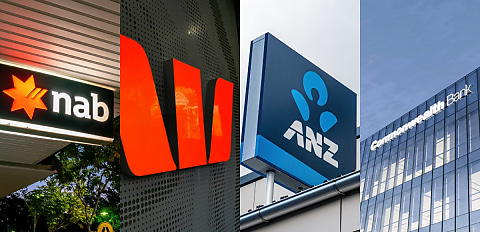National Australia Bank (NAB) has become the final big four bank to back a 4.6 per cent terminal cash rate, with the NAB Group economics team releasing new forecasts on Tuesday (20 June).
The major bank’s economics team, led by group chief economist Alan Oster, had recently upped its forecast to 4.35 per cent, tentatively adding that there could be a 25-bp rise in August. However, after noting that “recessionary forces” are gathering, the team has now confirmed a cash rate peak of 4.6 per cent by August.
In NAB’s The Forward View update for June, the economics team said 25-bp rises were likely in both July and August, echoing revised forecasts from the other three major banks.
NAB flagged that around 75 bps of hikes that had already been delivered were yet to flow through to mortgage payments.
The update read: “With the RBA squarely focused on returning inflation to target by 2025, we see further increases in the cash rate in coming months to ensure that, as global factors moderate, inflation settles back in the 2–3 per cent target band.
“Previously, we have seen the RBA treading carefully in an attempt to hold onto labour market gains and not unnecessarily risk a material downturn. However, inflation remains well above the target band and significant uncertainty remains around the pass-through of any easing in prices globally as well as how much further (and how sticky) services inflation rises.
“Therefore, we see the RBA squaring up some of the risks that have previously been all to the upside.”
Despite this, the bank economists said that “a higher expected rates profile will likely see the RBA downgrade its forecasts for activity and the labour market”.
“And with the economy eventually slowing, we see cuts back towards neutral still occurring from around mid-2024,” the team added.
Indeed, NAB has forecast that the cash rate will drop to 3.10 per cent by the end of 2024.
Given the new terminal cash rate forecast, NAB has also downgraded its expectations for gross domestic product (GDP) growth this year, with real GDP down at 0.5 per cent for the year ending December and at 0.9 per cent for 2024, and forecast a higher unemployment rate by the end of 2023 (4.2 per cent, before hitting 5 per cent at the end of 2024).
Household consumption is also expected to plateau through mid-2023 and drop through the second half of the year and into 2024, with a series of quarters of slightly negative real consumption growth pencilled in.
“Given the strength of population growth, this implies a significant contraction in per-capita consumption. Still, these forecasts remain highly uncertain as households will be able to draw down the existing stock of savings and will also be supported by a strong labour market and wage growth,” the bank economics team said.
Looking at inflation, the NAB group economists flagged that the April figures were higher than expected and “significant further moderation in inflation is needed to reach the RBA’s target band”.
“Our inflation forecasts are broadly unchanged. We expect the quarterly pace of inflation to ease gradually from here — but this will be highly dependent on how goods disinflation is passed through and the extent to which domestic services pressures continue to build,” the note read.
The economists estimated that inflation will moderate to around 4 per cent by the end of this calendar year and 3 per cent by the end 2024 but noted upside risks.
The Forward View concluded: “With a tight labour market, accelerating wage growth and ongoing pass-through of cost pressures, inflation remains a key risk. This is consistent with the global experience of ‘sticky’ inflation following an initial period of moderation. As policymakers move rates higher, trying to calibrate policy amid elevated uncertainties, the risks around growth continue to rise. Recessionary forces are gathering, albeit this is still not our central case.
“With policy now expected to move further into restrictive territory, we see growing risks globally and domestically for both activity and the labour market.”
[Related: LATEST PODCAST: Will 4.6% be peak cash rate?]
